Iran’s Currency Rises Over Prospects Of Reviving Nuclear Deal
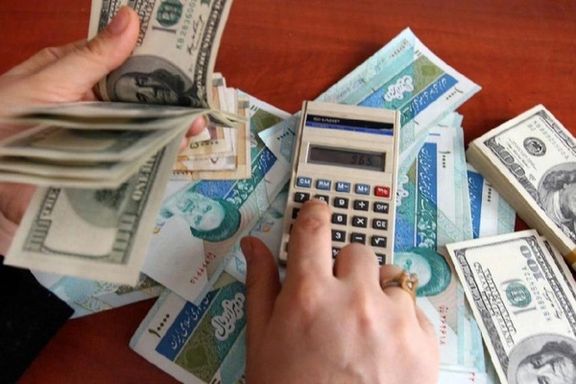
Iran’s currency rose on Wednesday, going below the important threshold of 300,000 rials to one US dollar as optimism increased about the prospects of a nuclear deal.

Iran’s currency rose on Wednesday, going below the important threshold of 300,000 rials to one US dollar as optimism increased about the prospects of a nuclear deal.
The rial was trading just below 300,000 in Tehran’s unofficial exchange market for the first time since mid-May. The rial had fallen to as low as 330,000 a few weeks ago as hopes for a nuclear agreement with the United States were fading.
Iran responded to a European Union proposal to resolve the nuclear issue on Monday, in what seemed to offer the best chance since March to reach an agreement.
Iran’s currency began falling in early 2018 when signs emerged that former President Donald Trump was planning to withdraw from the 2015 nuclear agreement and possibly impose sanctions on Iran.
Once the US announced its withdrawal and imposed crippling oil export and banking sanctions, the currency gradually fell ninefold by 2021.
The rial has fallen 4,500-fold since the 1979 revolution that toppled the monarch. The currency was trading at 70 against the dollar in 1978 compared with 3,300 in 2017 and around 300,000 now.
Economists in Tehran have said in recent days that even if a nuclear deal is reached, the rial will not recoup most of its losses and will probably trade at around 240,000 to the dollar, because of serious structural economic issues.
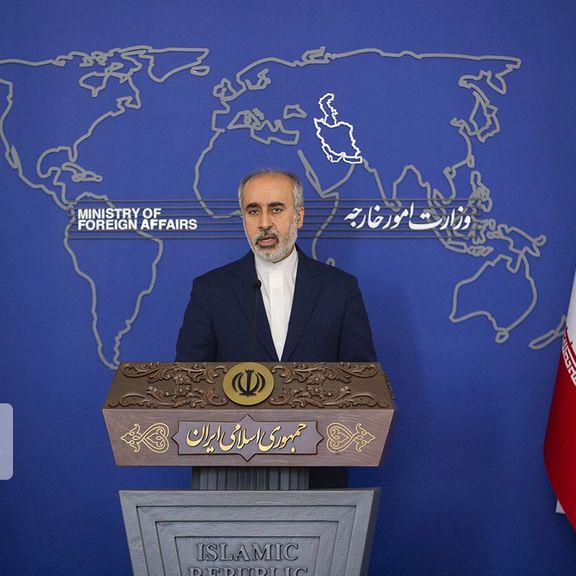
Iran’s Foreign Ministry says Tehran is ready to implement an "immediate agreement on Iranians imprisoned in America".
Foreign ministry spokesperson Nasser Kanaani said on Wednesday that the Islamic Republic has repeatedly announced its readiness to deal with the issue of prisoners through various channels to the American side.
“We are ready to implement this agreement so that the innocent Iranians imprisoned in America, who have become victims of the injustice of the judicial system of that country on false charges of violating the cruel and illegal sanctions of the United States, can be released and quickly return to their families,” he added.
He made the remarks a day after numerous American officials reiterated calls on Iran to release American dual nationals imprisoned in Iran, deploring the detention of Iranian-American Siamak Namazi on his 2500th day in Iran's notorious Evin prison.
Iran, which does not allow consular access for dual nationals, holds citizens of several countries including Germany, Austria, and Sweden, as de facto hostages. There have reportedly been Tehran-Washington contacts aimed at a prisoner exchange that would free Iranians jailed in the US, mainly over breaching American sanctions.
In the past decade, Iran's Revolutionary Guards have arrested dozens of dual nationals and foreigners, mostly on unproven allegations of espionage in what human rights organizations have said is essentially hostage taking.

Iran’s exiled queen Farah Pahlavi says the people of Iran "want the return" of the Pahlavi monarchy, and that she is ready to go back home.
The former queen made the remarks in an interview with the Italian newspaper Libero during a recent trip to Egypt to participate in the ceremonies on the death anniversary of her husband, Mohammad Reza Shah Pahlavi, the last king of Iran.
She referred to popular protests in recent years in which Iranians chanted slogans in support and appreciation of Reza Shah Pahlavi – the founder of the dynasty and father of Mohammad Reza Shah, saying that "It is shocking for me” that after all these years and all the Islamic Republic propaganda against the Pahlavi rule, people and politicians have noticed the Shah's services to the country.”
Reza Shah introduced many social, economic, and political reforms during his reign, ultimately laying the foundation of the modern Iranian state. Therefore, he is regarded as the founder of modern Iran.
Expressing hope that she will return to Iran, Farah Pahlavi added, "The most important issue is freedom of Iran and the freedom of Iranians. If one day I can return to my country, it will be a great joy for me."
Referring to the "severe poverty of the majority of Iranian people", the "mistreatment" of women and the protests by workers and teachers, she said that "most Iranians do not want this theocratic government and many young people are in favor of the monarchy."
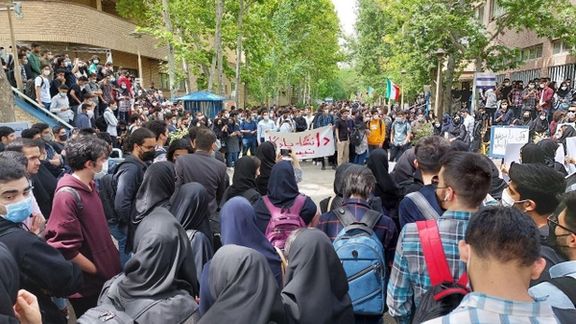
Almost half of Iranian youth want to leave the country amid pessimism about their future, a recent opinion survey conducted from abroad shows.
Asked if they would go and live in a foreign country given the chance; 49 percent of people aged 18-29 said yes. The percentage among the general population was fully one-third.
Statis Consulting, a US based opinion research outfit focusing on Iran, conducted the poll among 1,246 Iranian residents aged 18 and older in July.
“Based on the sample, there is a 95 percent confidence that the margin of sampling error is within ± 2.7 percentage points,” Stasis said.
Iran’s economic situation has drastically deteriorated since former President Donald Trump abandoned the 2015 nuclear agreement with Iran (JCPOA) and imposed crippling sanctions. But since the election of ultra-conservative Ebrahim Raisi as president in 2021, lifestyle pressures have also increased, with harsher enforcement of Islamic rules.
Seventy-seven percent of those surveyed responded affirmatively when asked if“Iranian youth do not see prosperity in their future.” Only 20 percent disagreed with the statement.
Fifty-three percent of respondents said that “government officials restrict the liberties of Iranian youth by interfering in their lifestyle. This number is even worse among young people aged 18 to 29; sixty-four percent believe this statement to be true.”
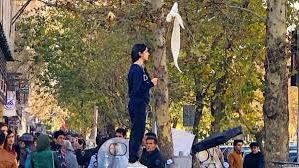
Since early June, the government has been cracking down on forced hijab violators, with enforcing tougher restrictions. Thousands have been stopped on the streets by ‘morality police’ and many have been detained and fined. Security forces arrested many women who took part in an anti-hijab civil disobedience action on July 12, when many women came to the streets with no headscarves.
Among the reasons why Iranians have left the country in recent years, the overall state of the economy is the main factor, according to the survey. The economy “was mentioned by fifty-seven percent of respondents, followed by political or religious freedom (twenty-six percent), and hope for a better life (twenty-five percent). Only five percent mentioned looking for higher education is the main reason for Iranians leaving the country.”
Fifty-five percent of respondents did not show confidence in President Raisi regarding issues that matter to young people. Only 35 percent believe that problems facing the youth are among Raisi’s priorities.
“Among young people aged 18 to 29, sixty-five percent say issues concerning young people are not Raisi’s priority. Only twenty-seven percent completely or somewhat agree. Moreover, most Iranians do not believe that President’s Raisi can boost economic opportunities for Iranian youth (fifty-nine percent),” Stasis reported.
The government and parliament dominated by hardliners loyal to Supreme Leader Ali Khamenei have dragged out negotiation with the United States to revive the nuclear agreement for more than a year. Sanctions have stayed in place and the economic crisis has deepened.
Overall inflation stands at 54 percent and food prices have risen by more than 100 percent since Raisi took office last August, according to official figures.
Statis also concluded that “those who reside in urban centers and who hold a college degree are more likely to say that they would prefer to leave Iran than Iranians who live in rural communities and who do not hold college degrees. Forty-three percent of Iranians who have a college degree say they would prefer to live in a foreign country.”
Interestingly, Germany is the top choice (16%) for those who want to leave, followed closely by Canada (15%) and the United States (14%).

More than 250 Iranian public figures say the United States must release details of the alleged ties between Salman Rushdie’s attacker and the Islamic Republic.
“We urge democratic countries to recall their ambassadors from Iran in defense of freedom of speech and universal human rights principles and limit the presence of this terrorist-Islamic regime in international organizations as much as possible,” 260 Iranian activists, literally figures, artists, and journalists living outside Iran said in a statementTuesday. They also urged the US government to release further details of the attack on Rushdie and the attacker’s connections with the Lebanese Hezbollah and the Islamic Republic.
US Secretary of State Antony Blinken in a statement on Sunday said Iranian state institutions have incited violence against Rushdie for generations and pointed out that Iran’s state affiliated media gloated over the attempt on his life. “This is despicable.”
Iran’s foreign ministry spokesman on Monday denied any links with the 24-year-old Hadi Matar who stabbed the 75-year-old Indian born author of Satanic Verses in New York on August 12.

Nasser Kanaani, repeated Iran's position that Rushdie had insulted Prophet Muhammed and is guilty. "Salman Rushdie exposed himself to popular outrage by insulting Islamic sanctities and crossing the red lines of 1.5 billion Muslims," Kanaani said.
Vice News reported on Sunday that according to European and Middle Eastern intelligence sources, Matar had been in contact with elements of Iran’s Revolutionary Guards (IRGC). Matar was charged with attempted murder on Saturday.
Vice News quoted a NATO counterterrorism official from Europe as saying that the attack on Rushdie had all hallmarks of a “guided attack”, meaning that a spy agency or a terrorist network had nudged Matar to kill Rushdie without getting directly involved in the operation itself.

Yahoo news on Tuesday also claimed that it had obtained a New York Police Department intelligence assessment according to which Matar is believed to have sympathized with the IRGC.
A preliminary investigation by police had suggested Matar was sympathetic to the IRGC as his Facebook account featured pictures of Qasem Soleimani, the IRGC general killed in a US drone strike in 2020, and Iran’s Supreme Leader Ali Khamenei.
Iran’s hardline media have openly welcomed the act, praised the assailant and called it “divine vengeance”. The flagship ultraconservative paper Kayhan, published under Khamenei’s supervision, flashed “a thousand bravos” to Matar.
“The western governments’ forbearance of the Islamic Republic’s terrorist activities and hatemongering paved the way for the recent attack on Salman Rushdie in the United States,” the 260 signatories of the statement entitled “Our Hearts Beat with His” said.
Human rights activist Ladan Boroumand, Iranian-French sociologist Saeed Payvandi, Iranian-American writer and professor of English literature Azar Nafisi, Iranian-French photojournalist Reza Deghati, human rights lawyerSaeed Dehghan, and visual artist Barbad Golshiri are among the signatories.
“It is now time to accept the reality that the Islamic Republic only represents a corrupt and criminal group and is the main enemy of the Iranian people and an enemy of peace and security and the global community,” they wrote.
The banned Iranian Writers' Association said in an earlier statement in Tehran that the death sentence issued by then-Supreme Leader Ruhollah Khomeini in 1989 against Rushdie for apostasy limited freedom of thought, expression, publication, and the right to free discussion of Rushdie’s book, Satanic Verses. “Undoubtedly, the attack on Salman Rushdie is clear evidence of assault on freedom of expression.”
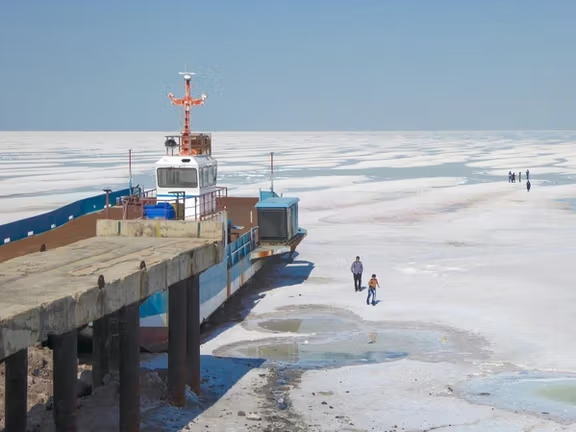
A former vice president and head of the environment department says the fate of the Iranian regime is contingent on saving the country's largest lake that has shrunk by 95 percent.
In a conference on Monday about ways to revive Lake Urmia (Orumiyeh), near Western Azerbaijan Province capital of the same name, Isa Kalantari highlighted that the lake has lost 95 percent of its water over the past three decades, despite government claims that it has appropriated hundreds of millions of dollars to prevent the environmental disaster.
If the lake is not restored, it will have security consequences, and no government can survive in the country because it cannot withstand the flood of migration of millions of people who reside near it, he said.
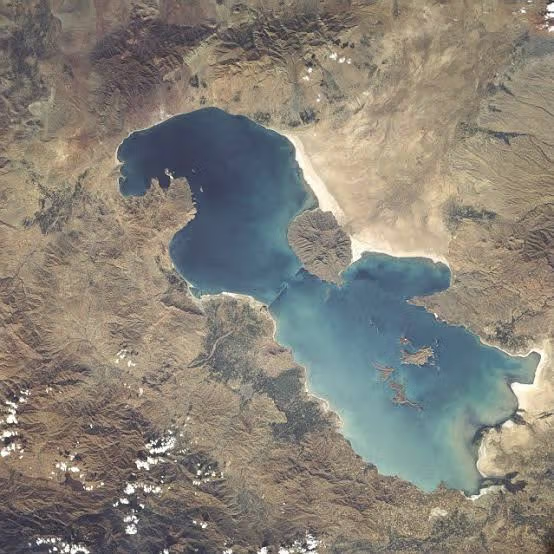
Kalantari said that the country's experts had warned about the drying up of this lake since the mid-1990s, but the authorities ignored the warnings.
Considering the fact that it has 13 billion tons of salt in its bed, if the lake dries up completely, the city of Tabriz should be evacuated, he elaborated, adding that even if this evacuation is possible, it will cost at least one trillion US dollars.

“The residents of the neighboring provinces will be forced to migrate; winters will be at least 3-4 degrees colder and summers 3-4 degrees hotter, which will disrupt the entire ecology of the region," he noted.
At its greatest extent, Urmia was the largest lake in the Middle East and sixth largest salt lake in the world, with an original surface area of 5,200 square kilometers in the 1970s, or 2,000 square miles. It had shrunk to 700 sq km by 2013. The lake began shrinking in the 1980s due to water mismanagement and climate change.